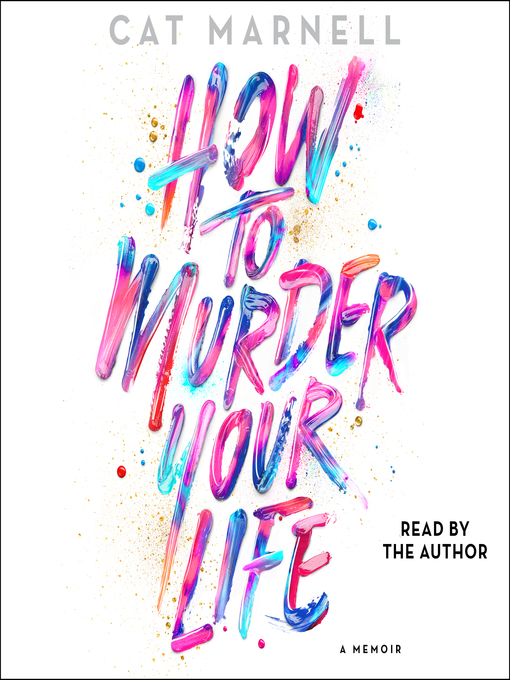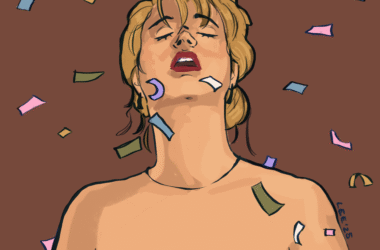One can only imagine the relief felt at the Simon and Schuster offices the day Cat Marnell announced she had finished her book. Conspicuously titled How To Murder Your Life, the work in question had cost the company three years and a $500,000 advance—most of which Marnell had reportedly spent before she’d even begun to write. Even so, the publishing company must have known what they were getting into.
In 2012, Marnell quit her job as the contributing beauty editor at the popular website, xoJane—started by media mogul Jane Pratt—where Marnell quickly gained notoriety as the “unhealthy health and beauty writer.” She chronicled her hard partying lifestyle in New York City, occasionally pausing her drug-fueled narrative to mention a beauty product or juice cleanse of some sort. Her pieces became the primary source of traffic to the website—with provocative titles like “I spent two weeks in a mental institution and left with better hair.” It seemed like Marnell was destined for her own brand of Internet gonzo greatness until she quit her job to write a book, telling the New York Post that she was simply not cut out for the 9-5 working world.
How to Murder Your Life hit the shelves on Jan. 31. From the opulent, Kennedy-grade boarding school where she spent her high school years all the way to the seedy, squalid streets of Alphabet City, Marnell’s stories read like the diary entries of a girlish ingénue. The hallmark of her writing has always been its brazen, lowbrow quality. Even the darkest among her stories were told in the same breezy manner.
“They were all nightcrawler vampires who raged until dawn and slept until dusk,” she wrote in her memoir, describing the sinister cast of characters she’d meet in nightclubs. “This is terrible for the soul but great for the skin—no sun damage, you know? So everyone looked good.”
Marnell began her publishing career auspiciously enough, working as a beauty editor for Lucky magazine, one of Conde Nast’s biggest publications. Contrary to her trademark druggy antics and general lack of conscientiousness, Marnell has endless respect for the industry.
“Magazines are what I love,” Marnell confessed in an interview on Feb. 29 2016 with Gavin McInnes, the founder of Vice Media—a publication she’d written for briefly. “I hated books like the Devil Wears Prada, when those Conde Nast bitches crack their whip, you should be honoured to fucking jump! That’s the glamour industry!” When Marnell was 28, she was forced to resign from her job. Later, she went to work for Pratt—a job she never took quite as seriously.
How to Murder Your Life was added to the New York Times bestseller list not two weeks after it was released—an impressive feat for a non-celebrity memoir. The book is as tragic as it is trashy, full of heartbreaking anecdotes about a young woman very much alone in the throes of addiction—not exactly easy reading. Perhaps one could attribute its success to the fact that such a sensational downward spiral will inevitably attract a crowd, but her long-time readers insist it’s more than that.
Near the end of her days at xoJane, Marnell published a piece on Whitney Houston’s death in 2012—which was rumoured to be drug related—where she also responded to criticisms about her own use.
“So many of you have expressed your disgust about how much I talk about drugs,” Marnell wrote, “I really tried to stop for a while, but you know what? No one else in women’s magazines or websites is writing about this stuff, so there’s nowhere for a female community to read it… It would be wonderful if we lived in a world free of drugs and drug addiction, but we don’t.”
Most addiction memoirs have one thing in common—in the end, the writer realizes the error of his or her ways and cleans up. But not Marnell. Instead, she writes that she is conflicted—why, she asks, should an addict have to be recovered in order to tell her stories? After all, Hunter S. Thompson—the pioneer of gonzo journalism and with whom she is often compared—carried on the same way for decades without ever having to publish a sanctimonious book about the evils of substance abuse.
How to Murder Your Life is lauded as an insightful look into the addiction epidemic just as often as it’s accused of being nothing more than a transparent attempt at shock value. Ultimately, it’s neither. It’s a story about a lonely girl who never quite grew up—and it might just be the most honest piece of writing to come out in a long time.









